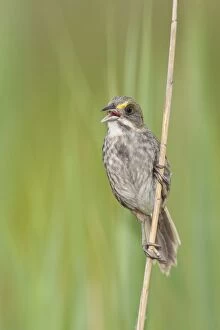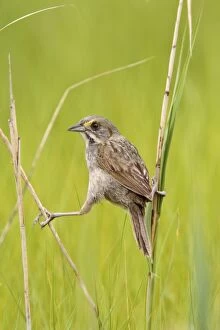Seaside Sparrow Collection
The Seaside Sparrow, scientifically known as Ammodramus maritimus, is a small and elusive bird that calls the coastal marshes its home
All Professionally Made to Order for Quick Shipping
The Seaside Sparrow, scientifically known as Ammodramus maritimus, is a small and elusive bird that calls the coastal marshes its home. With its distinctive streaked brown plumage and a touch of yellow on its face, this sparrow blends perfectly with the reeds and grasses of its habitat. Found along the Atlantic coast from Maine to Florida, the Seaside Sparrow has adapted remarkably well to survive in these challenging environments. It thrives in saltwater marshes where it can be seen hopping between tall grass stalks or perched on low branches near water's edge. Despite their inconspicuous appearance, these sparrows possess an enchanting song that fills the air during breeding season. Males sing melodious tunes to attract mates and establish territories within their marshy domain. Their vocalizations are both beautiful and complex, showcasing their remarkable ability to communicate through music. As true inhabitants of coastal ecosystems, Seaside Sparrows have developed unique adaptations for survival. They possess longer legs than other sparrows which enable them to navigate through muddy terrain effortlessly. Additionally, they have evolved specialized bills designed for feeding on insects found among wetland vegetation. Sadly though, like many species dependent on fragile habitats such as saltmarshes, these birds face numerous threats including habitat loss due to human development and rising sea levels caused by climate change. Conservation efforts are crucial in preserving their homes and ensuring future generations get to witness the beauty of this incredible species. The Seaside Sparrow is not just another ordinary bird but a symbol of resilience against adversity. Its presence reminds us of nature's delicate balance and our responsibility towards protecting our precious coastal ecosystems for generations yet unborn.





